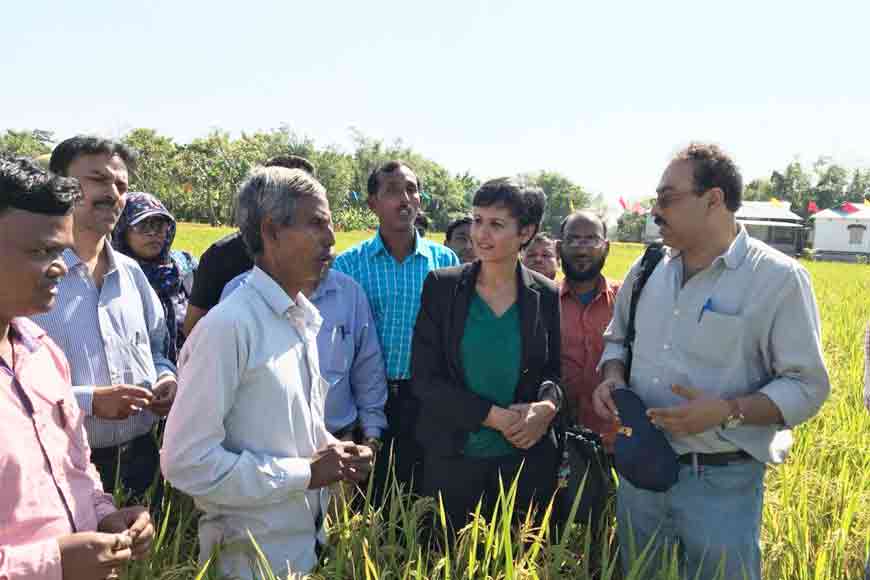How a Bengal village turned fertile from fallow

Well, a village in Alipurduar has set a rare precedence. It is an arid zone has transformed into a green valley with the touch of a magic wand, or so it seems. The dry fallow land was unfit for cultivation and residents of the area lived in abject poverty. But all has changed today. There is greenery and cultivation is carried out round the year. The prosperity of locals is evident everywhere. The men don’t have to migrate to other parts of the country for jobs. They are busy round the year farming on their plots.
Even three years ago, the soil of North Chakowakheti village on the outskirts of Chilapata forest area in Alipurduar was not cultivable except one cycle of paddy during monsoons. Half the crop would be consumed by wild elephants who plundered the paddy fields before retreating into the jungles. This was the norm which compelled the Adivasi men to go out of their locality in search of work. All this changed though.
The Centre for International Agricultural Research, an Australian organisation extended financial support to North Chakowakheti and Dhaolaguri in Coochbehar district for developing cultivation and increasing yield. North Bengal Agricultural University provided the technical support on the ground level. The farmers of these two villages who were used to cultivating one cycle of crop annually, found to their amazement, their land could be made fertile and production could be optimized by adopting advanced scientific technology. To continue uninterrupted farming during the dry season, solar pumps were installed. Green houses were set up to secure Ravi crops during the monsoons.
North Bengal Agricultural University has helped introduce no-till farming (also called zero tillage or direct drilling) which is a way of growing crops or pasture from year to year without disturbing the soil through tillage. Recently, a group of agricultural scientists from different European universities had come to witness the progress of the system. The Australian institute has invested Australian $82 thousand to uplift the condition of the poor farmers and those who don’t have their own land but work in other farmers’ land within the next five years.
The women of these two villages came forward and eagerly participated in the project to master the scientific procedures of cultivation. They cultivated spinach and coriander leaves/ cilantro in the green house during monsoon and made a substantial profit.Winter vegetables grow during monsoon and this new-found financial independence has opened up new vistas for the empowered women of the villages. Following advice from agricultural scientists, farmers cultivated herbs like ginger, garlic and mustardon their lands and the strong odour of these herbs warded off wild elephants. The Australian institution is also keen to include women in the project and encourage them to take up farming.
The state chief minister, Mamata Banerjee is also very enthusiastic about the project. The Australian organisation plans to bring other villages of the state within its purview and help others benefit from modern and scientific know-how. That the project has been successful is evident from the beaming faces of the locals who are basking in the new-found economic stability they had never even dreamt of achieving.









